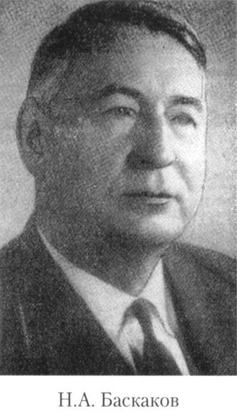
The Turkic languages are a language family of more than 35 documented languages, spoken by the Turkic peoples of Eurasia from Eastern Europe and Southern Europe to Central Asia, East Asia, North Asia (Siberia), and West Asia. The Turkic languages originated in a region of East Asia spanning from Mongolia to Northwest China, where Proto-Turkic is thought to have been spoken, from where they expanded to Central Asia and farther west during the first millennium. They are characterized as a dialect continuum.

The Tatars, formerly also spelt Tartars, is an umbrella term for different Turkic ethnic groups bearing the name "Tatar" across Eastern Europe and Asia. Initially, the ethnonym Tatar possibly referred to the Tatar confederation. That confederation was eventually incorporated into the Mongol Empire when Genghis Khan unified the various steppe tribes. Historically, the term Tatars was applied to anyone originating from the vast Northern and Central Asian landmass then known as Tartary, a term which was also conflated with the Mongol Empire itself. More recently, however, the term has come to refer more narrowly to related ethnic groups who refer to themselves as Tatars or who speak languages that are commonly referred to as Tatar.

Kyrgyz is a Turkic language of the Kipchak branch spoken in Central Asia. Kyrgyz is the official language of Kyrgyzstan and a significant minority language in the Kizilsu Kyrgyz Autonomous Prefecture in Xinjiang, China and in the Gorno-Badakhshan Autonomous Region of Tajikistan. There is a very high level of mutual intelligibility between Kyrgyz, Kazakh, and Altay. A dialect of Kyrgyz known as Pamiri Kyrgyz is spoken in north-eastern Afghanistan and northern Pakistan. Kyrgyz is also spoken by many ethnic Kyrgyz through the former Soviet Union, Afghanistan, Turkey, parts of northern Pakistan, and Russia.

Tatar is a Turkic language spoken by the Volga Tatars mainly located in modern Tatarstan, as well as Siberia and Crimea.

Bashkir or Bashkort is a Turkic language belonging to the Kipchak branch. It is co-official with Russian in Bashkortostan. It is spoken by 1.09 million native speakers in Russia, as well as in Ukraine, Belarus, Kazakhstan, Uzbekistan, Estonia and other neighboring post-Soviet states, and among the Bashkir diaspora. It has three dialect groups: Southern, Eastern and Northwestern.

Tuvan or Tyvan is a Turkic language spoken in the Republic of Tuva in South Central Siberia, Russia. The language has borrowed a great number of roots from the Mongolian language, Tibetan and the Russian languages. There are small diaspora groups of Tuvan people that speak distinct dialects of Tuvan in China and Mongolia.

Altai is a set of Turkic languages spoken officially in the Altai Republic, Russia. The standard vocabulary is based on the Southern Altai language, though it's also taught to and used by speakers of the Northern Altai language as well. Gorno–Altai refers to a subgroup of languages in the Altai Mountains. The languages were called Oyrot (ойрот) prior to 1948.
The Tubalars are an ethnic subgroup of the Altaians native to the Altai Republic in Russia.

Khakas, also known as Xakas, is a Turkic language spoken by the Khakas, who mainly live in the southwestern Siberian Republic of Khakassia, in Russia. The Khakas number 73,000, of whom 42,000 speak the Khakas language. Most Khakas speakers are bilingual in Russian.

The Altai people, also the Altaians, are a Turkic ethnic group of indigenous peoples of Siberia mainly living in the Altai Republic, Russia. Several thousand of the Altaians also live in Mongolia and China but are not officially recognized as a distinct group and listed under the name "Oirats" as a part of the Mongols, as well as in Kazakhstan where they number around 200. For alternative ethnonyms see also Tele, Black Tatar, and Oirats. During the Northern Yuan dynasty, they were ruled in the administrative area known as Telengid Province.

Northern Altai or Northern Altay is the several tribal moribund Turkic dialects spoken in the Altai Republic of Russia. Though traditionally considered one language, Southern Altai and the Northern varieties are not fully mutually intelligible. Written Altai is based on Southern Altai, and is rejected by Northern Altai children.

Southern Altai is a Turkic language spoken in the Altai Republic, a federal subject of Russia located in Southern Siberia on the border with Mongolia and China. The language has some mutual intelligibility with the Northern Altai language, leading to the two being traditionally considered as a single language. According to modern classifications—at least since the middle of the 20th century—they are considered to be two separate languages.

Nikolai Aleksandrovich Baskakov was a Soviet Turkologist, linguist, and ethnologist. He created a systematization model of the Turkic language family, and studied Turkic-Russian contacts in the 10-11th centuries CE. During 64 years of scientific work (1930-1994), Baskakov published almost 640 works including 32 books. The main area of Baskakov's scientific interests was linguistics, but he also studied folklore and ethnography of the Turkic peoples, and also was a musician and composer.
Siberian Tatar (Сыбырца) is a Turkic language spoken in Western Siberia, Russia, primarily in the oblasts of Tyumen, Novosibirsk, Omsk but also in Tomsk and Kemerovo. According to Marcel Erdal, due to its particular characteristics, Siberian Tatar can be considered as a bridge to Siberian Turkic languages.

The Kumandin language is a Turkic language spoken in the Altai Republic in Russia.The Kumandins name themselves "Kumandi-Kiji".

Teleut is a Turkic language spoken in the Altai Republic in Russia. It is sometimes considered a dialect of Southern Altai.
Soyot is an extinct and revitalizing Turkic language of the Siberian Sayan branch similar to the Dukhan language and closely related to the Tofa language. Two dialects/languages are spoken in Russia and Mongolia: Soyot in the Okinsky District of the Republic of Buryatia (Russia) and Tsaatan in the Darkhad valley of Mongolia.

Telengit is a Turkic language spoken in the Altai Republic in Russia by the Telengits.

Chelkan is a Turkic language spoken in the Altai Republic in Russia.











